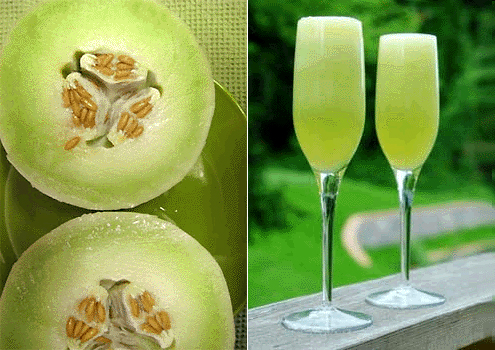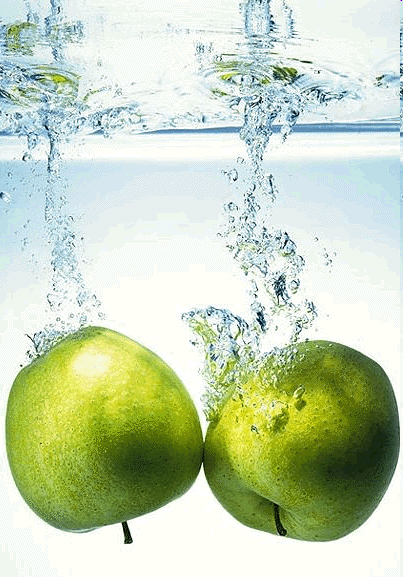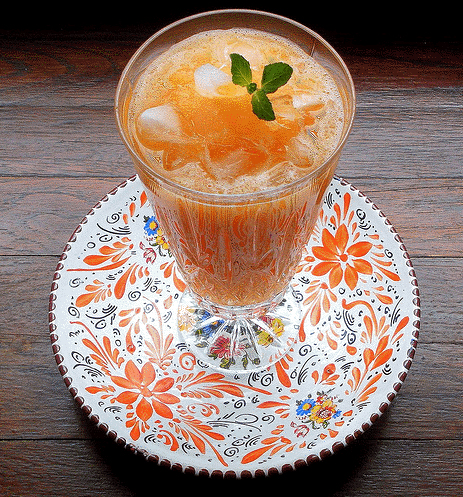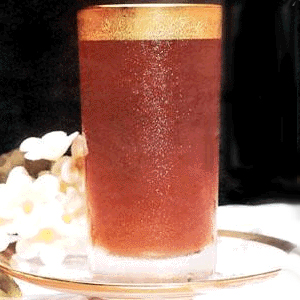
|
|
|
|
BY: SUN STAFF
 May 24, CANADA (SUN) — A journey through India: border to border, bhoga to prasadam. Today's Prasadam feature is not an ingredient, but rather a category of foodstuffs: sharbats. One of several categories of traditional beverages, "sharbat" is a term used throughout India, Southeast Asia and the Middle East to describe beverages prepared from fruits or flower petals, and usually served chilled or on ice.
Sharbats are made from a wide range of fruits and flowers. The sharbats most commonly enjoyed in India today are made with rose, mango, melons, grapes, plums, oranges or lemons, mint, bel (wood apple), or almonds. They're also made with peaches, papayas, pomegranites, amla (gooseberries), and lotus. Some sharbats get their primary flavor not from the fruit or flower petals used to make the base syrup, but rather from other spices, which might include cumin, fennel, saffron or sandlewood. Sharbats can either be fruity, aromatic, or even pungent, using spices like sarasaparilla root (nannari), basil seeds, pistachios, tamarind, and even rhododendron. Sharbats are sometimes eaten in concentrated form with a spoon, and when mixed with finely crushed ice, resemble a sorbet. Sharbats are not to be confused with sherbets (sherberts) however, which are a light variety of ice cream usually made with eggs. While the word 'sharbat' is said to be Urdu, it's primarily a Perso-Arabic term meaning 'sorbet' or 'syrup'. The word 'sherbet' is thought to have come into Hindu from the Arabic 'shariba', meaning 'to drink'. 'Sharbat' was then borrowed from Hindi and incorporated into English, from which both 'sherbet' is derived.

While we don't know the Sanskrit term for 'sharbat', it apparently exists, having been translated from the Sanskrit in Srila Krsnadas Kaviraj Goswami's Govinda-lilamrta, based on Sri Rupa Goswami's Sri Sri Radha-Krisnayor-astakaliya lila smarana Mangala Stotram, an elevated Vaisnava text on the intimate pastimes of Radha and Krsna. Although many descriptions of the history of sharbat in India attribute the popularity of these drinks to the Mughas, the Govinda-lilamrta describes the wonderful sharbats Radharani, Mother Yasoda and the gopis prepared for Krsna. The notion that it was the Mughals who 'invented', or popularized sharbat seems to come from the fact that the Mughal emperors, trying to deal with the extreme heat in India, sent their men into the Himalayas to bring back loads of ice, which was then flavored with perfumed syrups made of flower petals and fruits. Cookbook author Salma Husain has translated some of the sharbat recipes found in Persiam manuscripts from the courts of Mughal Emperors Jehangir and Shah Jehan. Among the many wonderful passages in Govinda-lilamrta describing the foodstuffs Srimati Radharani and the gopis cooked for Krsna, we find the following description of various beverages, including sharbats, which Mother Yasoda asked the gopis to prepare: Govinda Lilamrta Verse 43-46 "Oh Putri, Radhe! My Krishna is very fond of piyushgranti. So after making it, dump it within pancamrita, adding camphor, cardamom and other spices." Rasa-tarangini Tika: "Oh child Lalite! You can prepare rasala, and Vishakha can make sarab. You prepare shikharini, and daughter Champakalata will make matha." Rasa-tarangini Tika: "Hey putri Tungavidhye! You make the curd that will be used with many other preparations. And daughter Citre! You can prepare matsyandira (a sugar candy drink). Hey Sudevi, prepare khira-sara (thick condensed milk). Hey Rangadevi! You can make pishthaka (using cream and sugar cane molasses)." It's interesting to note that all of the sharbats described above are made of sweetened milk, yoghurt or buttermilk, rather than a base syrup of fruits or flower petals. So in Vedic culture, sharbats obviously comprise a much wider category of 'refreshing beverages' than the sharbats we commonly think of today. Over the next few segments, we'll present a wonderful array of recipes for excellent sarbats, including a number of Ayurvedic preparations that are very healthful. Today, we offer a few of the more exotic sharbats, being tart, sweet, and aromatic.

| |
